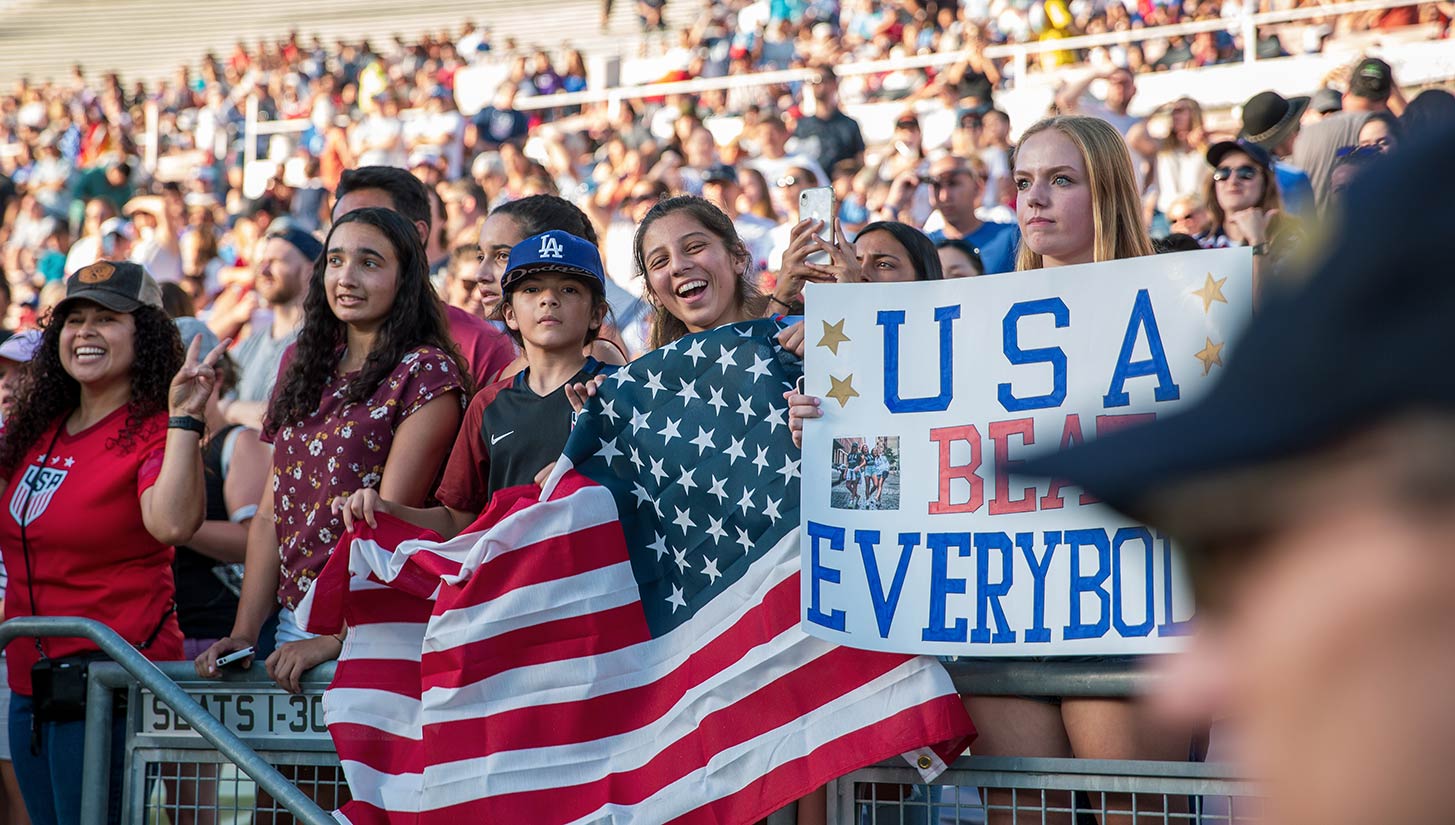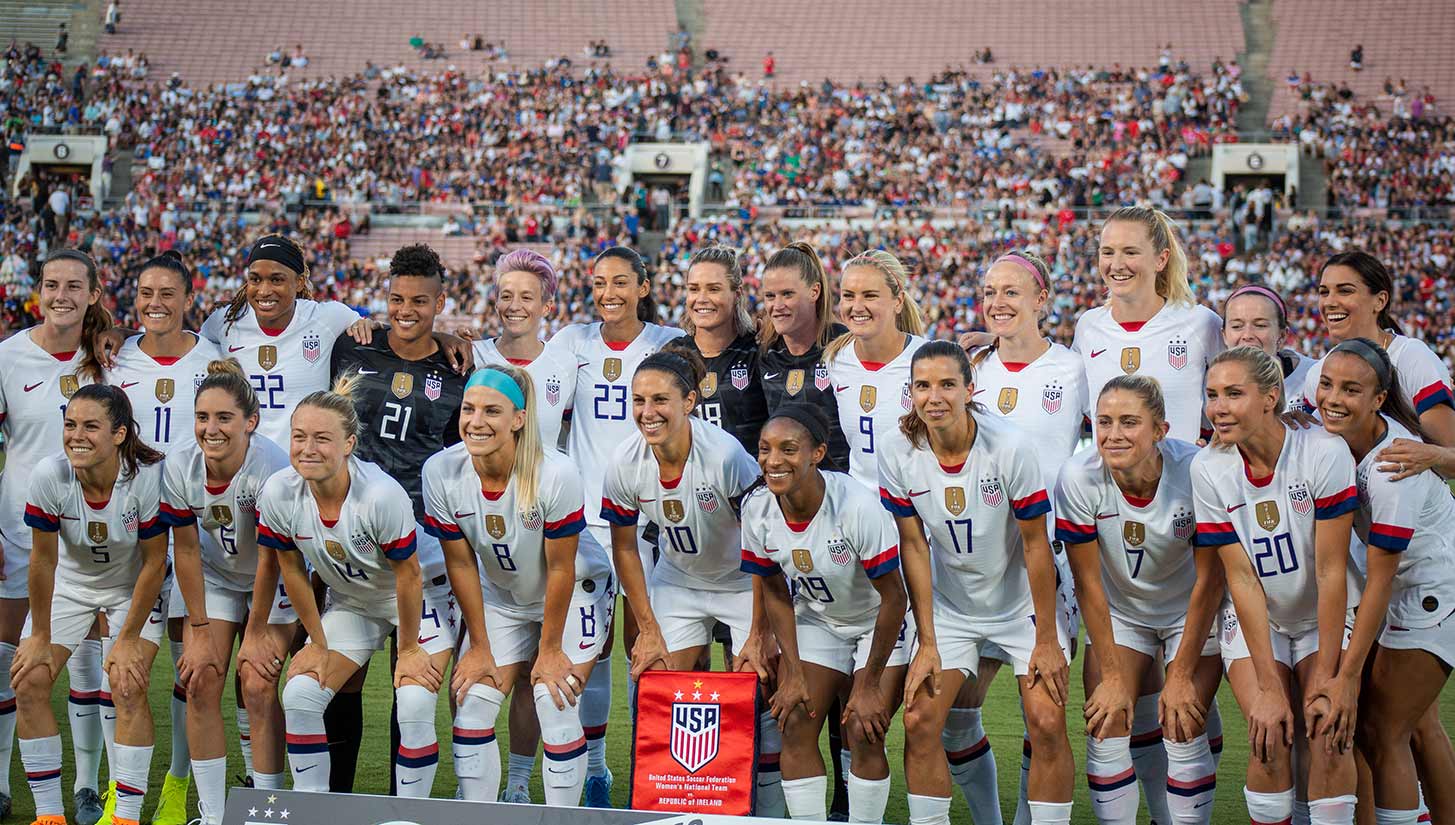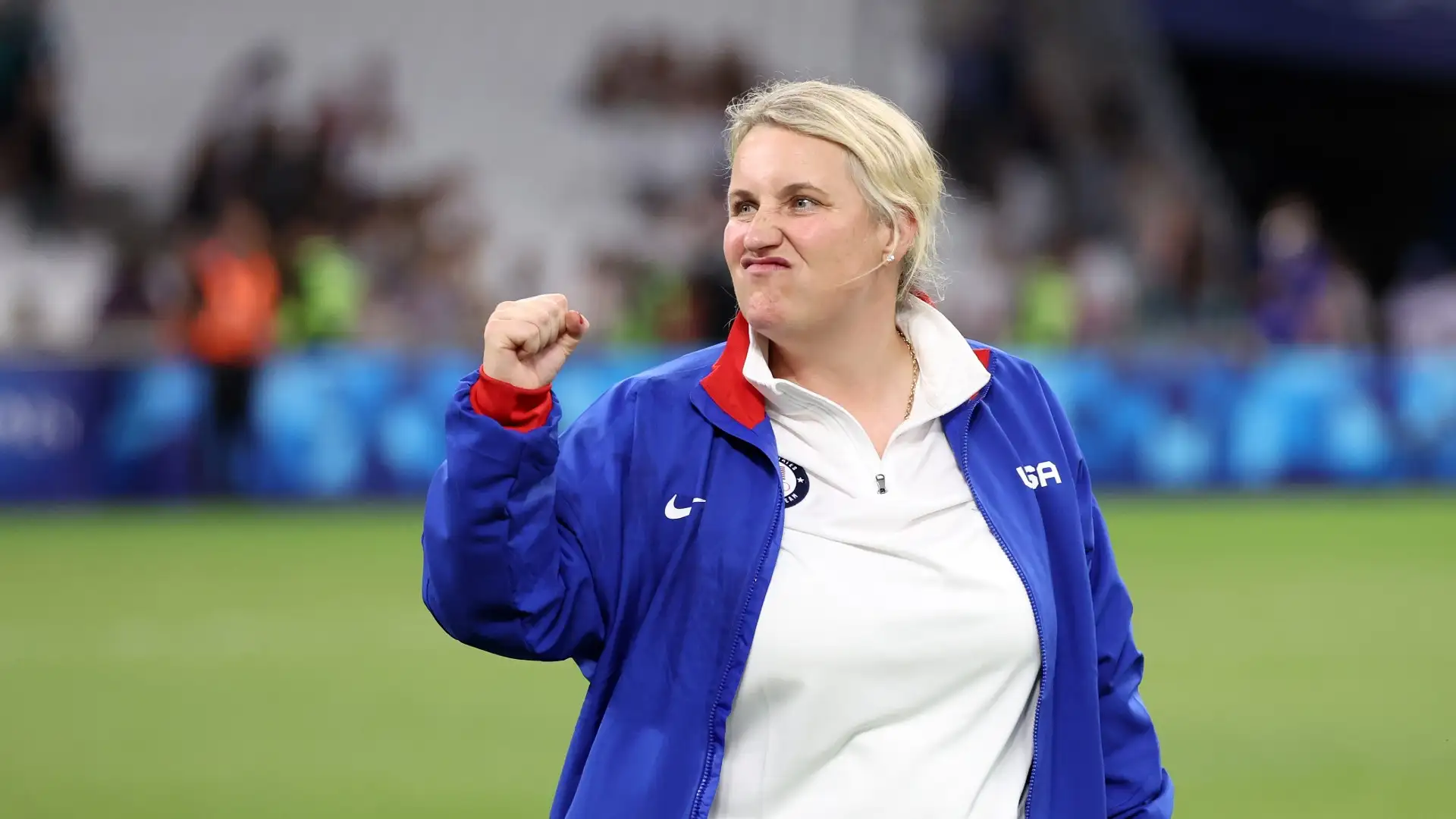After a dominant group stage performance at the 2024 Olympics, we take a look at the possible resurgence of the USWNT.
For years, in the world of women’s soccer, it was the United States and then everyone else. Over the past few decades, the U.S. women’s national team was a typical favorite to win just about every tournament it entered — and with the exception of a rare slip-up, it usually came pretty close. From 1991-2020, the nation finished in the top three of every major competition (World Cup and Olympics) except for the 2016 games in Rio de Janeiro.
Since the turn of the decade, however, the rest of the world has caught up. As women’s soccer became more popular, and more club teams and national federations began to take their women’s sides more seriously, talent began to develop everywhere else, and the USWNT’s dominance wasn’t so certain anymore.


A major turning point was the 2019 World Cup. The Americans, who featured an absolutely stacked team, earned their fourth star above their crest, but the road to glory was far from straightforward. Tough quarterfinal and semifinal matches against host nation France and a surging England, respectively, led to a convincing 2-0 victory over the Netherlands in the final.
It was evident throughout the tournament that teams across the board displayed major improvements, and the fan atmospheres both in and out of the stadiums, in addition to the TV viewership across the globe, illustrated the moving needle of women’s football.
While the average attendance at the 2019 tournament was slightly down from the 2015 games in Canada, there were still plenty of sold-out matches, and fans traveled quite well from outside countries. Multiple TV viewership records were set as well, with 1.12 billion total viewers tuning in throughout the tournament. The appeal for the women’s game was apparent, and clubs listened.

More teams expanded their women’s programs and academies, leading to more talent developing and a more competitive field, particularly in Europe. Tangible results were especially seen in Lyon and Barcelona, who have each fielded dynastic sides and played in front of massive, record-breaking crowds in Champions League play. Additionally, Barça, along with FA Women’s Super League clubs Arsenal and Chelsea, have seen crowds over 50,000 strong in their domestic leagues.
Traditional women’s powerhouses in Japan and Canada also continued to improve as well, closing the gap between them and the mighty U.S. slowly but surely.
That gap tightened further as the USWNT went through some growing pains post-2019. New manager Vlatko Andonovski took things over following Jill Ellis’ successful (yet chaotic) run at the helm of the program, and while he initially continued the team’s winning ways in his first few matches, something seemed to change at and after the 2020 Tokyo Olympics.
Despite having plenty of carryover from the dominant 2019 team, the two years in between tournaments — the Olympics took place in 2021 due to the COVID-19 pandemic — saw some shifts in the squad’s health and consistency.
Do-it-all midfielder Julie Ertz was more or less on one knee, yet still played huge minutes throughout the tournament, which impacted her future output. Similarly, Sam Mewis, who was just as if not more important to the USWNT midfield, was less-than 100 percent in Tokyo, and never played another game after the Olympics due to a lingering knee injury.
The fact that both players were playing so heavily despite being banged up was a product of tight Olympic roster restrictions, but it also showed a lack of depth that the team was not quite used to. There were jokes at the 2019 World Cup that the U.S. could field two title-winning teams with the talent it had. That didn’t seem to be the case anymore.
It can’t be emphasized enough just how crucial Ertz and Mewis were to the USWNT’s success. Both were extremely versatile — they were as tough as they were graceful and brought a sense of calm to the game that made things much easier for everyone else.
Clearly not operating at full throttle, the struggling U.S. was able to salvage a bronze medal in Tokyo, which only revealed the start of a downturn.
This dip in performance wasn’t for lack of talent, however. As former mainstays like Kelley O’Hara, Carli Lloyd, Tobin Heath, Becky Sauerbrunn, and Christen Press phased out of the team, young talents including Sophia Smith, Trinity Rodman, Catarina Macario, Emily Fox, and Naomi Girma took their place. On top of the remaining veterans like Crystal Dunn, Rose Lavelle, Lindsey Horan, Alyssa Naeher, and Alex Morgan, there were still plenty of high caliber players throughout the roster.
Yet for some reason, the U.S. couldn’t build any momentum after staggering at the Olympics, and often looked stale and stagnant under Andonovski’s system. In addition to missing Ertz and Mewis in the midfield, Lavelle experienced injury woes of her own, and the team struggled to find consistency at the position and utilized a revolving door of other midfield combinations to varying success.
Andonovski’s apparent lack of willingness to make substitutions or adjustments led to another disappointing major tournament at the 2023 World Cup, where despite the return of Ertz (albeit in a center back role), the USWNT would make its earliest exit at the tournament in team history, losing in the round of 16 to Sweden in penalties.
It was clear something needed to change. There was simply too much quality in the USWNT crop to play in such an uninspiring and frustrating manner. Andonovski was relieved of his duties shortly after the World Cup, and in November 2023, a new successor was named — Emma Hayes.

With Chelsea, Hayes experienced massive success, winning seven Women’s Super League titles, five FA Cups, and finishing runner-up in the 2021-22 UEFA Women’s Champions League. If there was a manager to match the USWNT’s talents, it was Hayes.
A brief stint under caretaker Twila Kilgore produced USWNT wins at the CONCACAF W Gold Cup and SheBelieves Cup, although neither was in convincingly dominant fashion. Hayes would fully join the team following the conclusion of the 2023-24 WSL season in a friendly against South Korea, just in time to tune things up before the 2024 Paris Olympics.
Three years since the USWNT’s downturn began, many wondered if the team could exorcize its demons at the tournament, especially considering the highly competitive group it was in along with Germany, Zambia, and Australia.
THE USWNT IS OFF AND RUNNING. 🇺🇸
Trinity Rodman with a tidy turn and finish to open the scoring against Zambia! #ParisOlympics pic.twitter.com/yyorSnoMSD
— NBC Olympics & Paralympics (@NBCOlympics) July 25, 2024
From the looks of things so far, the dominance is back. Three stellar performances has the USWNT flying high into the knockout rounds, with a rejuvenated attacking trio of Mallory Swanson, Rodman, and Smith, along with veteran Lynn Williams off the bench who is also capable of adding dangerous minutes.
In the midfield, it seems the U.S. has found its replacement for Ertz at the No. 6 role in Sam Coffey, and a healthy Lavelle puts less creative playmaking pressure on Horan, who excels more in a box-to-box role.
Girma anchors a solid back line along with Fox and Dunn on the outside, and despite center back Tierna Davidson going down with an injury against Germany, the versatile Emily Sonnett has been able to step in nicely.
The U.S. outscored its group C cohorts 9-2, and save for a four-minute stretch in the Germany game where it was 1-1, the team has not relinquished a lead after scoring.
It’s still quite early in the tournament and in Hayes’ tenure, but the USWNT hasn’t looked this inspired and dynamic since the infamous called-back goal against Mexico in 2021 that was later admitted to be an error by the referee.
Looking ahead, the U.S. will face Japan in what should be a grueling round of 16 match. To make things more complicated, Coffey will be out due to yellow card accumulation, and the team will also potentially still be without Davidson and forward Jaedyn Shaw due to injuries.
With only 18 rostered players, depth is a key issue in the Olympics, and the U.S. has already had to dip into its reserve players, as Croix Bethune made her Olympic debut in the final group stage match against Australia. Midfielder Hal Hershfelt, defender Emily Sams, and goalkeeper Jane Campbell are the remaining reserve players, but it’s yet to be seen if they will get a call heading into the knockout rounds.
With Coffey out, the ostensible replacement would be Korbin Albert. The PSG midfielder made headlines earlier this year for her controversial homophobic and insensitive social media posts, but she has since apologized and the team has dealt with the matter internally.
Albert has the versatility to play in multiple midfield roles, although she’s relatively unproven in a USWNT jersey, especially as a holding midfielder. However, her banger of a goal against Australia suggests she’s not afraid of the big stage.
Japan is no slouch, and the quarterfinal match will be a major test for the short-handed U.S. team, as will the rest of the knockout stage. The way things are going though, it almost feels safe to say — we’re so back.








